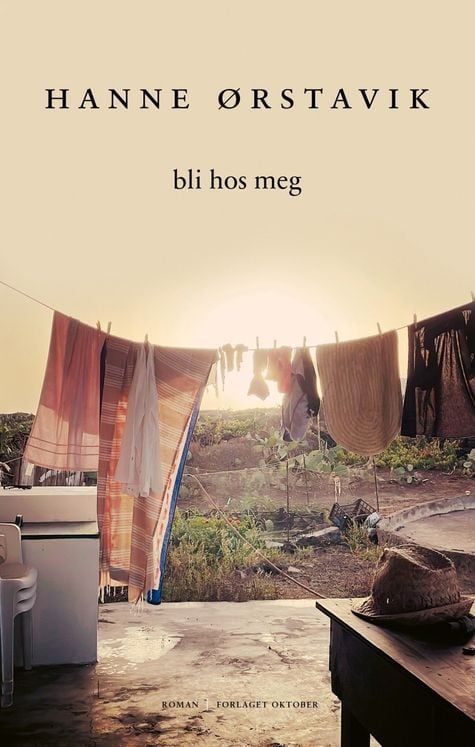“Ørstavik’s body of work is among the most distinctive and literarily rewarding we have in Norwegian, something this year’s release fully underscores.”
Bjørn Ivar Fyksen, Klassekampen, the 3 best books of 2023
“What loves are we meant to live?” Ørstavik asks in her thoughtful novel about unsafe relationships… Ørstavik’s descriptions of what fear does to a person are subtle but powerful… The ephemeral nature of the novel’s form functions as an illustration of what fear does to her.
Vårt Land
“Soul-searching on speed … Ørstavik writes with such distressing courage that as a reader, you become sweaty-palmed with unease… the protagonist’s story is explosive. This is Hanne Ørstavik at her very best; so intense and profound that the unease becomes contagious… above all, she conveys a spiritual openness that feels naked and vibrantly intense.”
Dagbladet
“[Ørstavik] examines, among other things, the relationship with her father with a precision of prose that she has rarely displayed in her previous books. It is both painful and courageous. In addition to this, she also demonstrates how a complicated relationship to a father can create patterns that are difficult to break free from or navigate later in life, for example in relationships with men. The story of the relationship with M, which she enters into after her husband’s death, is among the best she has written.”
Aftenposten
“Ørstavik has always been an author with a finely tuned interest in the complex emotional lives of people. So it is this time as well… Ørstavik writes, as usual, with high internal pressure, what is often referred to as ‘necessity.’ It results in several brilliantly beautiful individual passages.”
VG
“A furious love story… Ørstavik has a unique ability to shift perspectives, so that we see the vulnerability in the father and in the young lover… Each new element introduced contributes to deepening the conversations surrounding the overarching question: What does it mean to be loved by someone? What does it entail to fear psychological violence?… There is a pervasive sensitivity here, towards what is happening around us and within us. Constantly articulated through precise metaphors… Ørstavik turns us all into sensitivity readers—both in the literal sense and in the best sense of the word.”
NRK
“A powerful portrayal of male rage. Hanne Ørstavik reports from the borderland between fear and love, life and fiction… The fragmentary, disjointed form embodies an author-narrator trying to figure something out, while the extreme proximity to the material breathes life into the descriptions of difficult love… Ørstavik gives the material a stubborn literary force.”
Dagens Næringsliv
“The narrator in Hanne Ørstavik’s novel brilliantly seeks self-awareness – and awareness of the world – through art and literature… With intensity and perseverance, her body of work has achieved great internal mobility – in a richness of detail, sensual and reflective, that convinces… The cautious, exploratory sentences about the dyslexic glassblower in the neighboring house, who is in and out of prisons but at the same time cares, sending the narrator gifts and flowers, showing her care, extending a hand – these beautiful, short passages alone are worth reading stay with me.”
Klassekampen
“As I read Hanne Ørstavik’s new novel stay with me it strikes me how brave a writer she is… It is the perceptive, but also inquisitive and exploratory Hanne Ørstavik who brings this love story to completion. She is clearer and bolder than ever… She is daring in her choice of artistic devices and also demonstrates in this spring’s novel that she can effortlessly expand the literary space by incorporating other art forms… she weaves together childhood memories and adult love encounters where the sublime, the embarrassing, and the vulgar all find their place.”
Dagsavisen
“Ørstavik’s willingness to engage with what the outside world considers distant, illegal, or ridiculous is indomitable and invaluable… Her writing style may feel lingering but constantly seeks concreteness, to actually make visible the movement in a meeting, a thought, a feeling. And as she succeeds, the reward is significant, as these descriptions actually allow us to experience something in a way that feels relevant… the slower churn of the mirroring side stories provide valuable insight into the narrator’s self-understanding… The value of her self-examination lies not only in the ‘rawness’ but in the powerful way it grips your arm.”
Morgenbladet
“After finishing reading her new novel stay with me I think that she is the love theorist we need right now … The book makes me think while I read it, it disturbs me, stimulates me, affirms me. Is the novel true?… It speaks to us the way we speak, it questions and looks for patterns, only to break free from them. It seeks to meet the reader, rather than overstretching. It tries to hear something else in order to get beyond.”
Vinduet
“Ørstavik continues her honest and heartfelt explorations of the innermost rooms… In the relationship on the novel’s contemporary level, childhood plays out again. It’s a familiar theme, but in Ørstavik’s delicate, almost luminous prose, it becomes relevant and alive … Ørstavik shows us how long the journey to the innermost room can be; it can take a lifetime to get there. She handles the difficult subject matter with great care, and with this completely open attitude that makes you almost dizzy while reading.”
Dag og Tid

